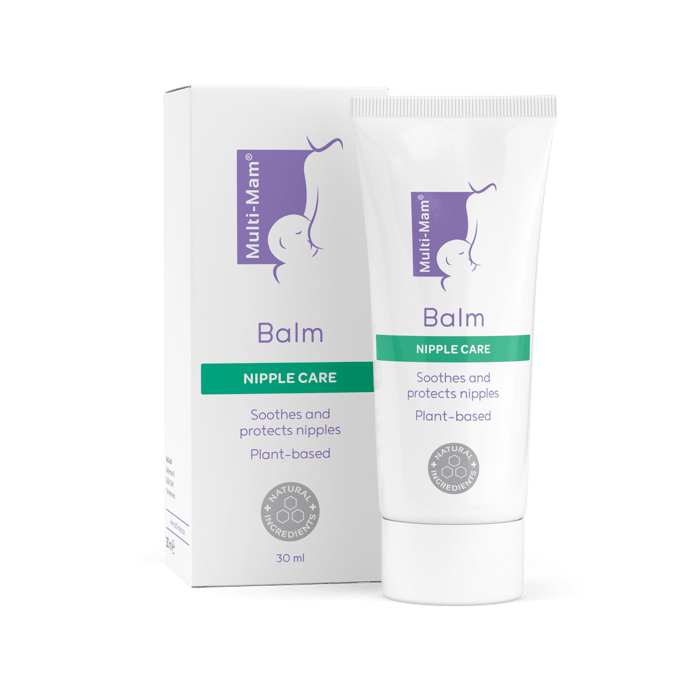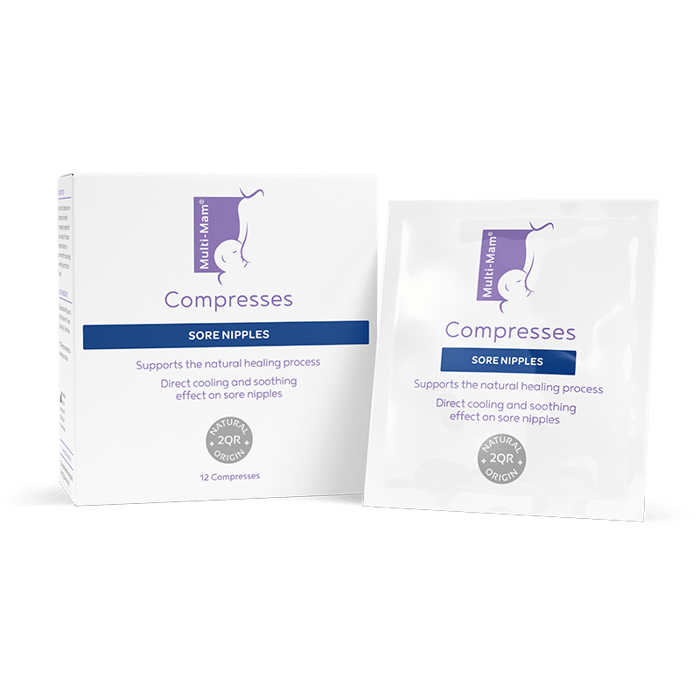Breastfeeding
Breastfeeding is a natural process that helps mothers bond with their babies and also provides the nutrition and calories that a baby needs to grow. Though it is an entirely natural process still requires practice and is a skill you will need to develop. Understanding how to breastfeed, what conditions to keep an eye on, and how to alleviate breastfeeding-related side effects can help improve both your health and the health of your baby.
Read on to discover
- How do I breastfeed?
- What are the popular types of breastfeeding?
- Breastfeeding positions for twins and multiples
- What are five advantages of breastfeeding?
- Common Breastfeeding Complications
- How long does the average mum breastfeed?
- When do I stop breastfeeding?
- How often do babies need to be fed?
- Breastfeeding FAQ
How do I breastfeed?
Though breastfeeding is natural, it is still a skill that needs to be developed. Breastfeeding positions make a huge difference in how much breastmilk your baby has access to and is also an important way you can reduce the risk of blocked ducts and other breast and nipple-related irritation.
These breastfeeding tips will help you find the right breastfeeding position and also how to direct your infant to feed evenly from breast to breast.
Master the breastfeeding latch: breastfeeding latching tips
The first step to breastfeeding is to bring your baby close with their nose at the same level as your nipple. Your baby will then tilt their head back, open their mouth, and latch on. Their chin should be firmly touching your breast. Here’s a couple of steps and tips:
- Tickle the baby’s lips with your nipples, this will help opening their mouth wide
- Put the nipple slightly above they baby’s over lip, while making sure that their chin is not tucked into the baby’s chest
- The baby’s lips should point like a fish by now, turned outward. Then aim the baby’s lower lip away from the base of the nipple.
- The baby should lead into your breast with their chin and latch onto your breast. The baby’s tongue should be extended and the breastfeeding should start.
- If the latch on is only on the tip of the nipple or it hurts for any other reason, softly put a clean finger in the baby’s mouth to break the latch and try it all over again.
Use the right breastfeeding hold
There are a lot of breastfeeding holds that make it comfortable for you to breastfeed your baby. Explore which of the breastfeeding positions is most comfortable for you. Your comfort matters here as improper breastfeeding can lead to blocked breast ducts and other complications.
Finish by burping your baby
Burping is another key part of feeding your baby. You may need to burp your baby during feeding or after. This is because babies tend to suck in air as well as breastmilk during a feed and will need to release it. If they don’t burp on their own, you can give them a helping hand by laying them on your shoulder, in your lap, or across your lap and gently rub or pat their backs to help them expel excess air.
What are the popular types of breastfeeding?
There are a couple of popular breastfeeding holds or positions. Each of these will work to help you feed your baby, and there isn’t one position that is better than the other – just what is more comfortable for you. The correct breastfeeding position is what you are comfortable with and also what helps your baby get fed properly. Though there are more positions than these top three, these are the best breastfeeding positions to start with:
Cross cradle hold breastfeeding
This is easily the most popular breastfeeding position for newborns. You will want to find a comfortable chair to sit on, ideally with armrests. If there are no armrests, pillows or other arm supports can be used. Your baby will be in your lap facing you, and your baby’s head will be supported on your forearm. Bring your baby towards your nipple to start feeding.
Tip: Keep your baby’s ear, shoulder, and hip in a straight line for comfortable and effective feeding.
Side lying breastfeeding
Side lying breastfeeding is perfect for those wondering how to breastfeed lying down. To feed your baby this way, you will want to lay down comfortably on your side and face your baby towards you. You will once again want to ensure that your baby’s ear, shoulder, and hip are in a straight line. Use a pillow or blanket to support your baby’s back so that they don’t roll over, and gently guide them towards your breast.
Laid back breastfeeding
You can also breastfeed lying on your back. You will need back support for this position so use cushions or pillows so that you are leaning back, but not lying flat. Your baby will be placed in front of you or just on your side if you have had a caesarean section. You will want to be able to easily see your baby’s face. Once you are comfortable, gently guide your baby towards your nipple.

Breastfeeding positions for twins and multiples
If you feed your babies one at a time, you can use any of the above methods. If you want to feed both twins at once, you may want to consider the breastfeeding rugby hold, also known as the clutch hold. On top of feeding two babies at once, this hold is ideal if you are recovering from a caesarean surgery.
Breastfeeding twins is often much easier in this hold. You will want to sit in a chair with a cushion or pillow next to you. Position your baby at your side under your arm. Their hips will be close to your hips and their nose should be level with your nipple. Support each head with your palm and gently guide them to your nipple. You can do this on both sides.
What are the advantages of breastfeeding?
There are many great breastfeeding benefits. The top five benefits of breastfeeding include:
Regular skin-to-skin bonding
Skin-to-skin contact is an excellent way to bond with your baby. Not only does it work to increase your bond, but it also works to help calm and soothe your baby.
Colostrum, your first milk, is nutrient dense and very good for the health of a newborn.
Colostrum is an incredibly nutrient-dense version of your breastmilk that you start to produce during your pregnancy. It is full of antibodies, is calorie-rich, and it offers a lot of benefits for your baby. Your baby will only need about a teaspoon of this breastmilk at a time and will often need to be fed once every hour at the start.
Breastmilk is very nutritious and also works to protect your baby from infections.
Your breastmilk will mature as you continue to breastfeed. Even though your breastmilk will not always be colostrum, it will continue to provide all the nutrients and health benefits your baby needs. Breastfeeding may even reduce the risk of necrotising enterocolitis (NEC), which affects premature babies, eczema, stomach problems, colds and infections, and even sudden infant death syndrome (SIDS).
Breastfeeding reduces health concerns in the mother
Breastfeeding may even reduce your risk of breast cancer, ovarian cancer, osteoporosis, diabetes, and cardiovascular disease.
Breastfeeding releases the happy hormone oxytocin
Oxytocin helps improve your mood and reduce stress. This may help with symptoms of baby blues or postpartum depression.
Breastfeeding is also cost-effective and convenient. All you need to do is continue with your healthy diet and hydrate properly to keep your supply going.
Common Breastfeeding Complications
Most common complications from breastfeeding are mostly centered around lactating. Breastfeeding itself can help relieve many of the symptoms and side effects that can be bothersome or even outright painful.
Engorgement
Many women experience engorgement. Engorgement is the feeling of having overly full breasts. Breasts may feel tight or sore. Frequent breastfeeding, hand pumping, and hand expressing your milk are all ways to relieve the pressure. Engorgement usually goes away and levels out on its own as your body adjusts to how much milk production is necessary.
Sore, irritated, dry, or itchy nipples
Proper nipple care, proper feeding positions and the right latch on are essential to help avoid painful, irritated, or itchy nipples. Avoid washing your nipples with soap. If you are experiencing irritation or dry skin, consider Multi-Mam baby-friendly nipple balms or Multi-Mam compressors that can be worn even during breastfeeding.
Painful adjustment period
Lactating begins in the 16th week of your pregnancy, but it doesn’t really kick in and start until a few days after birth when milk production starts. This can lead to engorgement and can even be quite painful. Your body will also need time to adjust milk supply, which may be too low or too high. A breastfeeding routine may help your body adjust faster.
Blocked milk ducts
Blocked milk ducts are a risk when you are lactating. A blocked duct breastfeeding will feel like a small lump in your breast. The good news for those wondering how to unblock a milk duct is that breastfeeding is the answer. You can also try using a breast pump or hand expressing.
To help encourage circulation and breastmilk flow, you may want to try a warm shower or warm compress and massage the area towards your nipple.
If you do not remove the block in your milk ducts, you may develop mastitis. Mastitis is often treated with antibiotics. If not treated quickly enough, you may develop a breast abscess.
Body image and self-esteem issues
Some women may experience a drop in their self-esteem or develop a more complicated relationship with their bodies during this time. Maintaining your mental health and wellbeing can be difficult on your own. Seeking out support from friends, family, and even professionals may help improve the relationship that you have with your body.
How long does the average mum breastfeed?
While you should start introducing new foods once your baby starts teething, you do not need to stop breastfeeding. It is recommended that you exclusively feed your baby with breastmilk for at least the first six months, but mothers can continue breastfeeding while introducing new foods after this mark. How long you breastfeed is up to you, and is down to personal preference.
When do I stop breastfeeding?
You will continue to lactate until you stop breastfeeding, pumping, and expressing your milk by hand. Though there isn’t a specific period of time when you absolutely have to stop, the rule of thumb that many mothers use is to start weaning your baby off breastmilk once their first teeth erupt and they can get started on solid foods. Weaning can help your baby adjust to their new diet and usually helps to comfortably slow milk production.

How often do babies need to be fed?
You cannot overfeed your baby with breastmilk, so let them dictate how often they want to be fed. Newborns, for example, typically want to be fed around 8 times in a 24-hour period, and this will continue for the first few weeks.
Breastfeeding FAQ
Why does my baby want to feed longer at night?
You may notice when you are breastfeeding at night more than during the day. This is because night time is when your body produces more prolactin. Prolactin is the hormone that produces milk. You may notice that cluster feeding at night is most common. Creating a breastfeeding night time routine can help keep your baby fed and may help create a sleep routine for the both of you.
What is cluster feeding?
If your baby seems to want to be fed more frequently and even seemingly constantly, don’t worry. This is known as cluster feeding, and it is very normal in the first three to four months.
How long does cluster feeding last?
Each cluster feeding usually lasts for a few hours and stops in a few days.
What does cluster feeding mean?
All it means is that your baby is going through a growth spurt and is using more energy growing and, therefore, needs more sustenance.
A cluster feeding newborn is nothing to worry about. Simply allow them to continue to feed as much as they want and need.
Can I still breastfeed if I am sick?
Unless you take medication that can affect your baby via your breastmilk, you will want to continue breastfeeding even if you are sick. Cold and flu viruses are typically not able to pass through to your baby through the breastmilk. In fact, the opposite is true, as your breastmilk contains antibodies that will improve your baby’s immunity.
Can I still breastfeed if my breast duct is blocked?
Breastfeeding is one of the best ways to remove a blocked breast duct. To do this, simply tilt your baby’s chin towards the block and massage the small lump to help release the block of breast milk.
Can I still breastfeed if my baby is sick?
Your breastmilk is full of antibodies and nutrients that your baby will need to help their bodies battle the virus that is making them sick. Aim to eat healthier and drink more during this time as sick infants tend to feed more.
How do I stop my nipples from feeling sore?
Breastfeeding should not cause you pain. If your nipples are sore, then try changing the breastfeeding position or latch on technique you are using. Some great latch on tips and steps are:
- Tickle the baby’s lips with your nipples, this will help opening their mouth wide
- Put the nipple slightly above they baby’s over lip, while making sure that their chin is not tucked into the baby’s chest
- The baby’s lips should point like a fish by now, turned outward. Then aim the baby’s lower lip away from the base of the nipple.
- The baby should lead into your breast with their chin and latch onto your breast. The baby’s tongue should be extended and the breastfeeding should start.
- If the latch on is only on the tip of the nipple or it hurts for any other reason, softly put a clean finger in the baby’s mouth to break the latch and try it all over again.
Another reason why your baby may be being more aggressive when feeding is because they are teething. Suckling harder and biting is a common counter-measure that provides them relief. Use a baby-friendly balm or compressor like the options available at Multi-Mam to ease the pressure.
Why do my breasts feel overly full or tender?
If your breasts feel overly full, tender, or tight, then you may be experiencing breast engorgement. This usually happens in the first few days after birth and is completely natural. Your body does not yet know how much milk it needs, and over time your breastfeeding routine will help inform your body of how much milk is needed. If you feel a lot of pressure, you can relieve some of it by using a breast pump or hand expressing your breasts.
How can I relieve pressure in my breasts?
You can relieve pressure in your breasts between feeds by using a breast pump or hand expressing your breasts to release a small amount of breastmilk. You will not want to remove all the breastmilk, as this will just encourage your body to produce more.
How long will I continue to lactate after I stop breastfeeding?
Some women stop lactating just a few days after they stop breastfeeding, while it may take weeks for others. Use cold compresses and work to wean your baby off of your breastmilk slowly but gradually to reduce pain and symptoms of engorgement.
Links & Sources
- https://www.sciencedirect.com/science/article/pii/S152695230700164X
- https://www.sciencedirect.com/science/article/pii/S003139550570290X
- https://www.cochranelibrary.com/cdsr/doi/10.1002/14651858.CD003517.pub2/abstract
- https://www.sciencedirect.com/science/article/pii/S0140673615010247
- https://www.cochranelibrary.com/cdsr/doi/10.1002/14651858.CD001141.pub3/abstract



